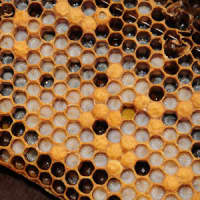Royal Jelly, a white and viscous jelly-like substance, is a form of hypopharyngeal and mandibular gland secretion from the worker bees. It is also known as a “superfood” that is solely consumed by the queen bee. Royal jelly is also fed to the honeybee larvae upon hatching and helps to nurture the brood. It is the exclusive nutriment offered to the immature young larvae in their first 2-3 days of maturation besides being used as a food specifically for the queen bee throughout her entire life cycle. Royalactin is the main compound in royal jelly that allows the morphological change of a larva into the queen bee. This superfood is the main reason for the longevity of the queen bee compared to the other bees. Royal jelly is widely used as a dietary nutritional complex to help combat various chronic health conditions. Furthermore, it is one of the profitable remedies for human beings in both traditional and modern medicine. Many pharmacological activities such as antibacterial, antitumor, antiallergy, anti-inflammatory, and immunomodulatory effects have also been attributed to it.[1]
Composition
Healing Properties
Disease / Symptom Treatment
Adverse Affects
Synergistic Effects
Title: Honey, Propolis, and Royal Jelly: A Comprehensive Review of Their Biological Actions and Health Benefits
Publication: Oxidative Medicine and Cellular Longevity
Date: July 2017
Study Type: Comprehensive Review
Author(s): Visweswara Rao Pasupuleti, Lakhsmi Sammugam, Nagesvari Ramesh, and Siew Hua Gan
Institutions: Universiti Malaysia Kelantan, Jeli, Malaysia; Universiti Sains Malaysia, Kubang Kerian, Kelantan, Malaysia
Copy: archive, archive-mirror ↩︎
